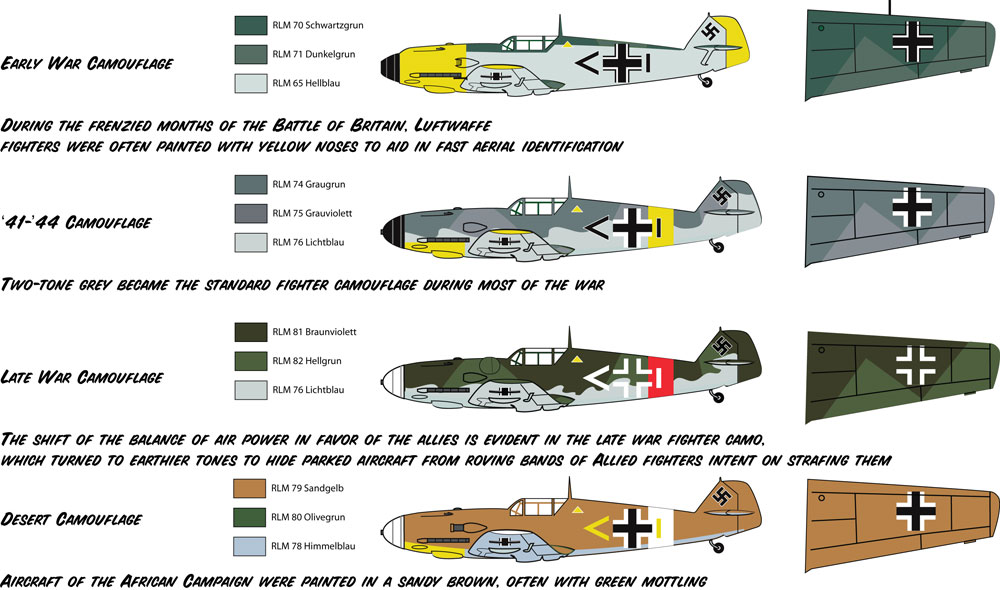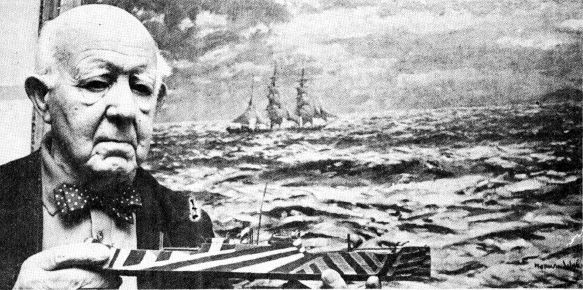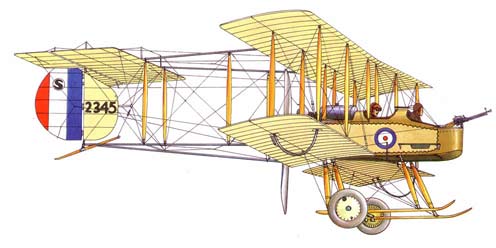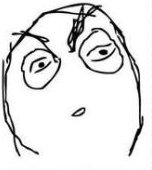"Hmm, Dii.. whatever do you mean?"

Hm, well its just that even large warships nowadays have camouflage, and in the war they did too.. some more than others, all Royal navy ships had sky blue and white zig zag patterns if looked at from the side.
This type of camouflage is called "Dazzle painting" or as the americans called it "Razzle Dazzle" and was created by the painter Norman Wilkinson, though it may seem absurd trying to camouflage such large vessels with paint alone, the purpose of the Razzle Dazzle paint was confuse the opponent rather than to mask the ships location. By making it difficult to determine the ships heading and speed the Dazzle paint could help to increase a ships survivability by putting off the old fashioned range finders and telescopes used in submarines or for artillery.
For example here is a normal house/appartment painted completely in Dazzle type patterns, it makes you think and try to focus in on where certain parts are, and what it is you are actually looking at.
Confusing no?
Dazzle was created because the sea and sky contantly change, unlike grass or a forest, where the colour palletes are consistent and permanent throughout, one camouflage type painted on a ship would only work in 1 weather condition, as soon as the weather changed the ship would again stand out like a sore thumb.
so the royal navy moved for a different approach to the problem.
British War and Merchant shipping, painted in 'Dazzle Paint' camouflage


Print by Edward Wadsworth, one of the men incharge of applying the camouflage to British shipping
however of course as things became more advanced, aircraft and such, especially the introduction and wide spread use of Radar, made Dazzle camouflage increasing outdated and eventually useless towards the middle of the second world war.
Regardless of its becoming obsolete as a means of effective confusion, i think a airship with this Dazzle paint texture on it would look really really good. definatley something to do a test of in the furute.
Aircract Camouflage
Since its all about the sky for my production, looking at the camouflage used by aircraft is a must.
Good video of the camouflage used on Luftwaffe (german airforce) aircraft during the war.
Looking at this video before doing any other research, it seems as though there is no correlation between each plane and their camouflage, also each plane features a series a set of different camouflages, which is something to think about for my final pieces.
Aircraft have 2 camouflages, the paint on top of the hull, and the paint on the bottom of the hull. since they are seen from both above and below its important to have camouflage on both sides.
the camouflage on the topside is to defend mostly against hostile planes already in the air, masking the plane by blending it in with the scenery of its airbase. and of course the camouflage on the underside was to defend against Flak and other ground based anti-aircraft devices looking up into the sky.
Early aircraft in world war 1 were not camouflaged at all, and their fragile wooden frames and cloth wings made them easy targets for any plane in the sky above them, easily visible and sticking out like a sore thumb the losses of aircraft for both sides due to this spurred on the use of camouflage.
Camouflage Example

looking at this image, you spot the first four planes on the picture with a cream non camouflage body than the green camouflaged plane in the top left of the image.
Another classic example of the lack of camouflage in WWI is of course the Red Baron, and his dashing symbolic red Tri-winged aircraft (fokker Dr. 1) which has become more of an iconic symbol of the era.
http://www.fritzthefox.com/british_camo_guide.html
Found a good website with descriptions of various camouflages for all of the sides in the war, it is for model enthusiasts (physical model not 3D) but still it can work for what i may need it for.
Content example, Me-109 Paint Scheme

*snaps fingers* back to airships
"Would there be any point in adding camouflage to an airship?"
Well its part of the visual identity for both sides that I need to come up with. Since they are war machines, and war machines need a battle to fight in, and battles need factions to dislike eachother, and so on.
So I need to figure out a litte bit of back story for my idea, need to think about the world its set in, as well as some basic politics and reasons for fighting, since just saying "they dont like each other" isnt really too exciting.
If it for a game, the game will need a narative at least on a very marginal level.
Hmm, more to think about.













This comment has been removed by the author.
ReplyDeleteI'm afraid your World War I Scout Plane, De havilland Airco DH-2 isn't. It's either a Airco DH1 or an RAF FE2.
ReplyDelete